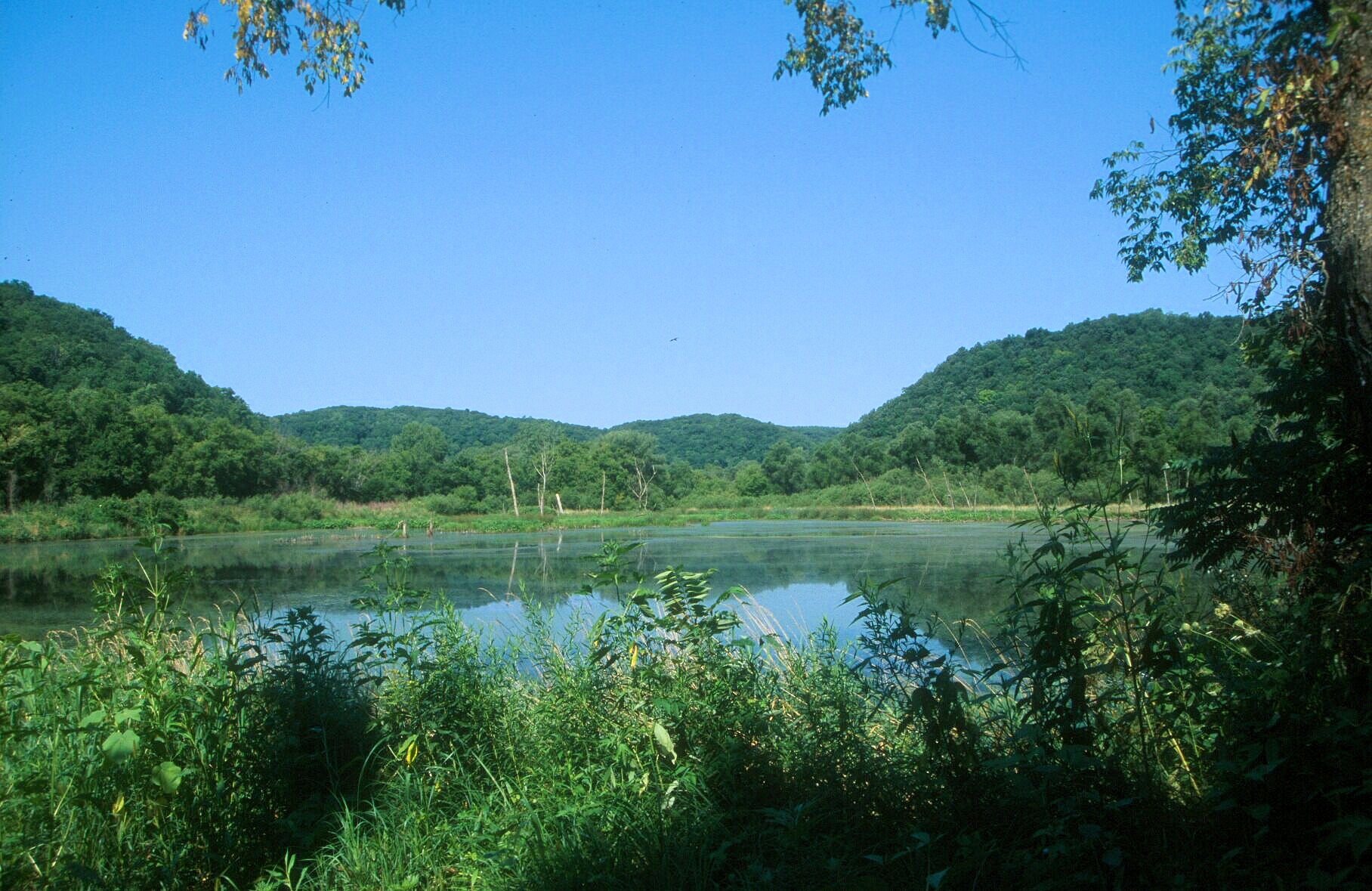
The rugged, deeply carved landscape of the Paleozoic Plateau, in northeastern Iowa, differs from the rest of the state. Its uniqueness includes an abundance of rock outcroppings, few glacial deposits, many deep, narrow valleys that contain fast-flowing cool water streams, and the highest percentage of woodland land cover than is found in any other Iowa landform. This remarkable high-relief landscape has resulted from erosion through layers of rock formed during the Paleozoic era. The bedrock dominant terrain provides habitat for unusually diverse plants and animals alike, many of which are typically found in more northerly and cooler climates. Because this bedrock often occurs at or near the surface, the result is carved valleys lined with rocky bluffs, the deepest of which line the Mississippi River and rise straight up for several hundred feet. Such rugged topography was historically resistant to the spread of prairie fires and resulted in the largest contiguous woodland patches in Iowa; which is still true today. The steepness of the topography limits the amount of cultivation for row crop agriculture, and most intense farming occurs on the plateaus of the ridge-tops and in the wider river valleys. The open ridges that were once covered with prairie are now mostly pastures and hayfields, helping support the dairy and beef cattle industry.
Because of both the large contiguous forest landcover and the older growth of many of the public land forests, this area of the state provides nesting habitat for most of Iowa’s breeding population of Cerulean Warblers. Other large forest dependent birds, found nesting here in good numbers, include Red-shouldered Hawk, Broad-winged Hawk, Wood Thrush, Blue-winged Warbler, Kentucky Warbler, Ovenbird, and Acadian Flycatcher. More northerly nesting species found here include Winter Wren and Veery. Perhaps the most unique species and the one most dependent on steep river bluffs for nest sites, is the Peregrine Falcon. Most of the confirmed nesting records in the state for Yellow-bellied Sapsucker occur in this landform, as well. While this area of the state is better known for its forest birds, good numbers of grassland birds, including Henslow’s, Field, and Savannah sparrows were also documented nesting in this region. Including migrants, at least 258 species of birds have been documented in this unique landform of the state.